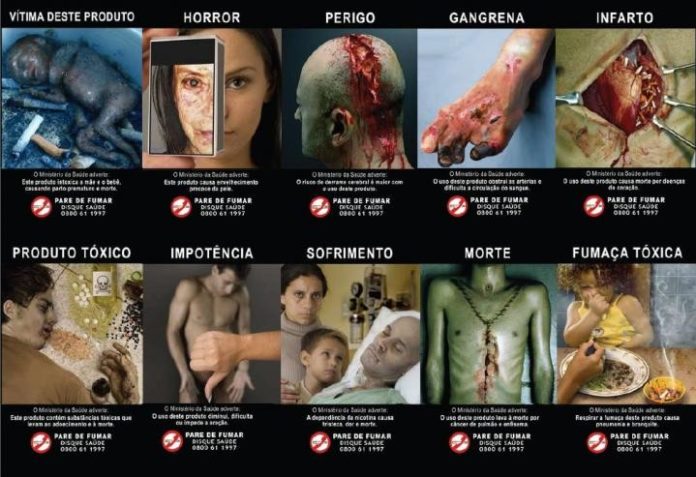
Young adults are more likely to appreciate the dangers of smoking when warnings are presented in images as well as text, according to a new study by a Washington State University Vancouver psychologist.
A growing body of evidence supports the effectiveness of graphic warnings in motivating smokers to quit. Such labels can show people dying in hospital beds, facial scars, rotting teeth and diseased body parts. But less research has been done to show how much individuals actually learn from these labels.
Renee Magnan, an assistant professor of psychology, sought to remedy this discrepancy in her study, currently online in the Annals of Behavioral Medicine.
“Our outcomes suggest that focusing on enhancing understanding and knowledge from smoking warning labels that convey true consequences of smoking may not only influence motivation directly–both in terms of quitting and prevention of smoking–but may actually drive the emotional experience of the label, which we know is an important predictor of motivation,” Magnan said.
In the study, smoking and non-smoking people between the ages of 18 and 25 took an online survey asking how much they learned about the dangers of smoking from cigarette warning labels. Participants in the first group completed the survey for course credit in their undergraduate psychology courses. Participants in the second group were a more diverse sample of young adults, recruited through a national website survey service. Respondents represented 48 out of 50 states.
The labels used in the study emphasized negative consequences of smoking associated with lung cancer, heart disease and stroke, impotence, eye disease, neck, throat and mouth cancers, and vascular disease.
After responding to measures of smoking behavior and background information, participants rated each label on perceived understandability, perceived knowledge gained, the extent to which the label evoked worry, and perceived discouragement from smoking.
Overwhelmingly, participants in both groups reported the combination of images and text as providing significantly better personal understanding and more new knowledge, aroused more worry about the consequences of smoking, and discouraged smoking more than the corresponding text-only label.
Only two of the image-and-text labels evoked results similar to text-only labels: a limp cigarette in hand, meant to convey impotence, and an image of an IV needle in skin, implying prolonged illness.
The results suggest that the more understandable and informative the labels, the more likely people will worry about the consequences of smoking and, ultimately, be discouraged from doing it.
“Although this is a preliminary investigation, from a policy perspective, these outcomes suggest that focusing on deriving greater understanding and knowledge from such labels may have more impact in terms of both motivational and emotional responses,” Magnan said. “Importantly, however, these labels are only a small piece of what should be a larger campaign to educate the public on the dangers of smoking.”
Story Source:
The above story is based on materials provided by Washington State University. Note: Materials may be edited for content and length.
Journal Reference:
- Renee E. Magnan, Linda D. Cameron. Do Young Adults Perceive That Cigarette Graphic Warnings Provide New Knowledge About the Harms of Smoking? Annals of Behavioral Medicine, 2015; DOI: 10.1007/s12160-015-9691-6
